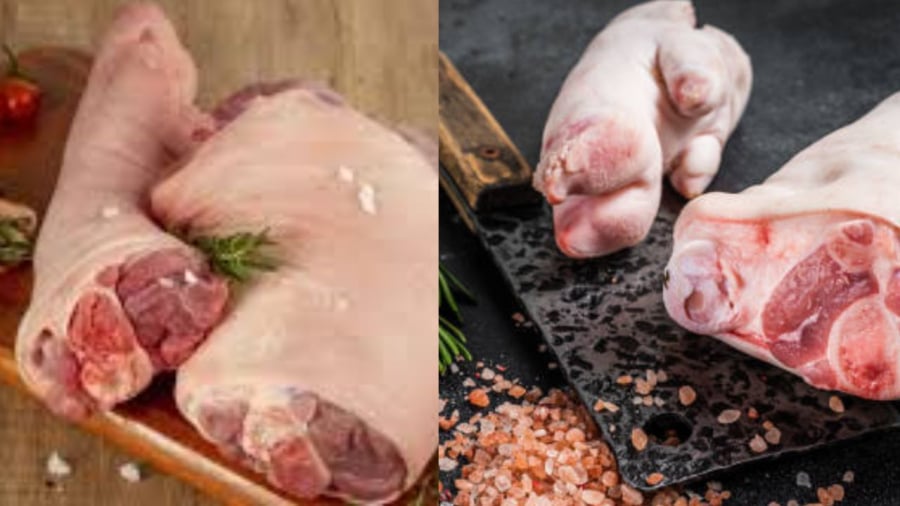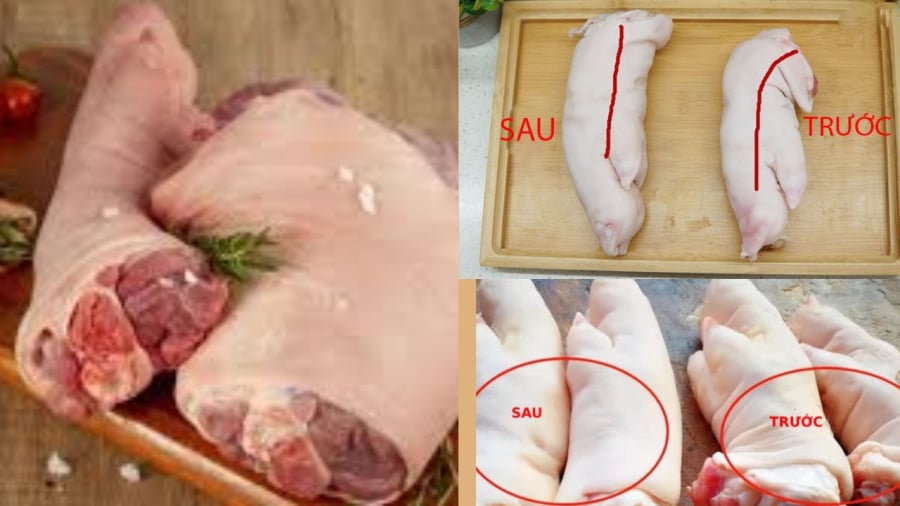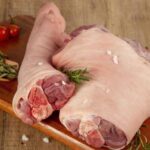Pork hocks are a familiar and popular food item in many cultures. From hearty stews to grilled delicacies, pork hock dishes are diverse and beloved. For food enthusiasts, especially those who enjoy a tipple, pork hock is a tantalizing treat. However, when purchasing, it’s essential to know that front and hind hocks differ in value.
Which is tastier, front or hind pork hock?
The front hock is the forward-facing part of the pig’s leg, while the hind hock is the rear portion. Pigs are known to spend a significant amount of time lying down, and as a result, their front legs see more action than the hind ones. This leads to the front hock having firmer and meatier meat. It also tends to be tougher and has more connective tissue. Typically, the front hock is also smaller in size compared to the hind hock.
On the other hand, the hind hock contains more fat, giving it a richer, more luscious taste. With less connective tissue, the meat is tenderer. Due to its meatiness, the front hock is often preferred for dishes that require substantial meat content, such as ‘giả cầy’ (a traditional Vietnamese pork stew), boiling, and beer stewing. The hind hock, with its higher fat content, is usually chosen for dishes like porridge and grilling.
The majority tend to favor the front hock for its flavor and texture. However, some people make their choice based on the dish they plan to prepare. If you’re looking for a meatier, chewier experience, the front hock is the way to go.

How to differentiate between front and hind hocks
Distinguishing between the two can be tricky without prior knowledge. However, understanding the nature of pigs can help. Here are some telltale signs:
- Front hocks have more connective tissue, so if you spot a higher amount of tissue, it’s likely a front hock. Hind hocks have less tissue.
- When looking at the cross-section, if you see a higher proportion of lean meat with a firmer texture, it’s a front hock. Hind hocks have a higher fat content and a looser structure.
- The front hock will have a larger hoof. If you’re aiming for crispy skin and chewy, meaty goodness, go for the front hock.
- Examine the hoof—the front hock’s hoof is usually shorter, more curved, and sturdier, while the hind hock’s hoof is longer and straighter.

Things to keep in mind when buying pork hocks
When purchasing pork hocks, look for a natural ivory or light yellow color rather than pale or white skin. The latter may indicate that the meat has been treated to appear whiter. The flesh should feel springy to the touch, with a bright pink hue, free from any dark spots or paleness. Give it a gentle squeeze—if it bounces back, it’s fresh; if it doesn’t or if there’s liquid, it’s likely been thawed and refrozen.
Additionally, try gently knocking on the bone—a crisp, clear sound indicates a fresh hock that hasn’t been thawed for too long.
Tips for eliminating the pungent odor
The hoof area of the hock comes into contact with dirt and grime in the pigsty, which can lead to an unpleasant odor if not properly cleaned. To address this, thoroughly scrape off any remaining hair. If the skin is still yellowish, scrape and rinse it under running water. Next, use a mixture of ginger, white liquor or cooking wine, and salt to marinate the hock. This process not only cleanses but also helps remove residual blood from the bones. For best results, marinate for about an hour.
Afterward, you can briefly dip the hock in boiling water to sanitize it or grill/roast it to impart a delightful aroma, depending on your chosen cooking method.
For a crispy-skinned boiled hock, plunge the cooked hock into ice-cold water as soon as it’s done boiling. If you’re aiming for a grilled or roasted dish with a crispy skin, ensure the skin is nicely charred before proceeding with your recipe.
The Ultimate Guide to Choosing the Perfect Ribs and Pork Hock: A Meat Connoisseur’s Dream
Pork ribs and trotters are beloved ingredients in many cuisines across the globe. They offer a unique texture and flavor that has captured the hearts of many food enthusiasts. With their versatile nature, these meaty treats can be transformed into an array of mouth-watering dishes, from sticky, finger-licking barbecue ribs to crispy, golden-brown trotters that crackle with every bite. Their popularity is undeniable, with many chefs and home cooks alike embracing their potential to create culinary masterpieces. Whether it’s a cozy family dinner or a lavish restaurant menu, pork ribs and trotters always deliver a satisfying and memorable dining experience.





































